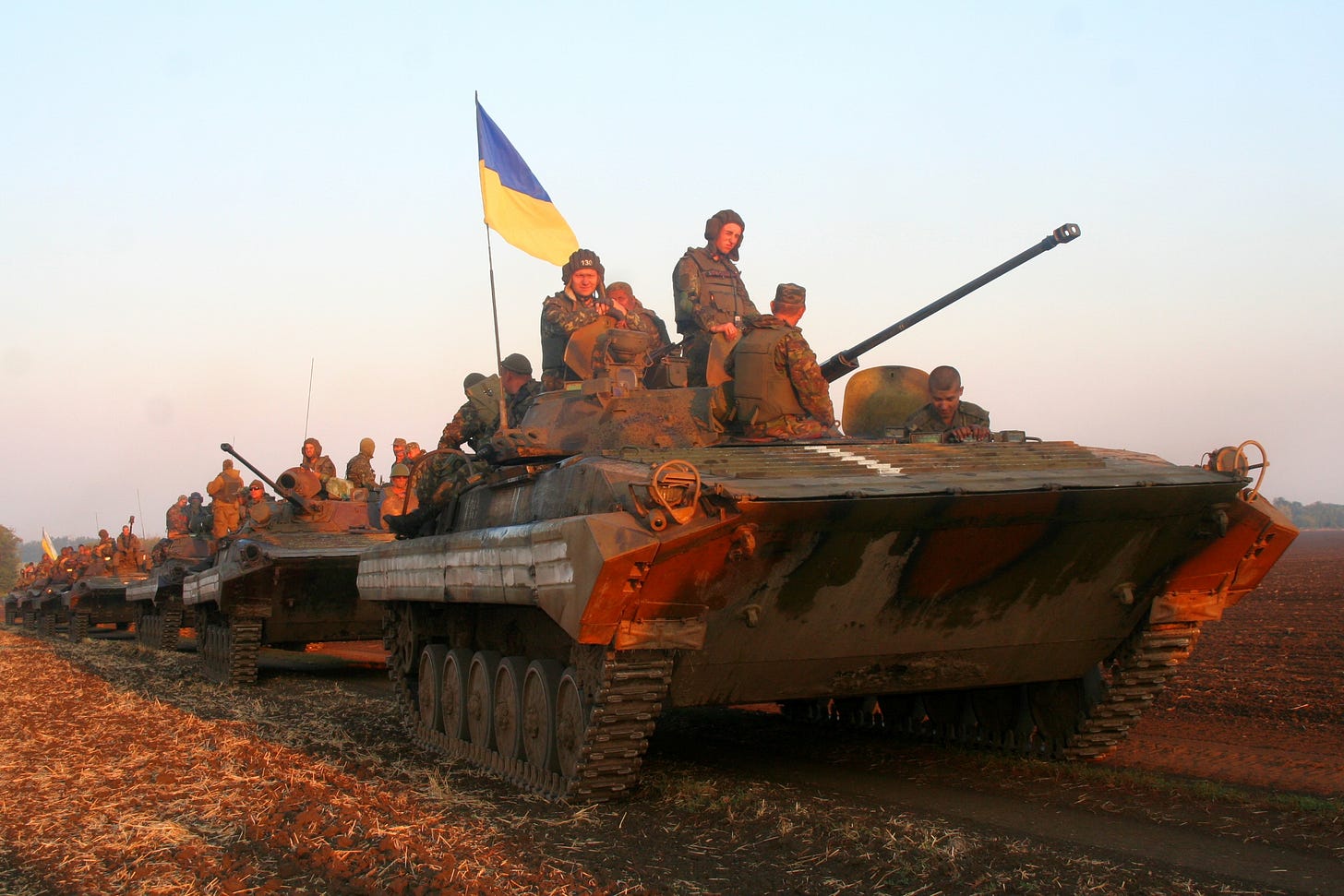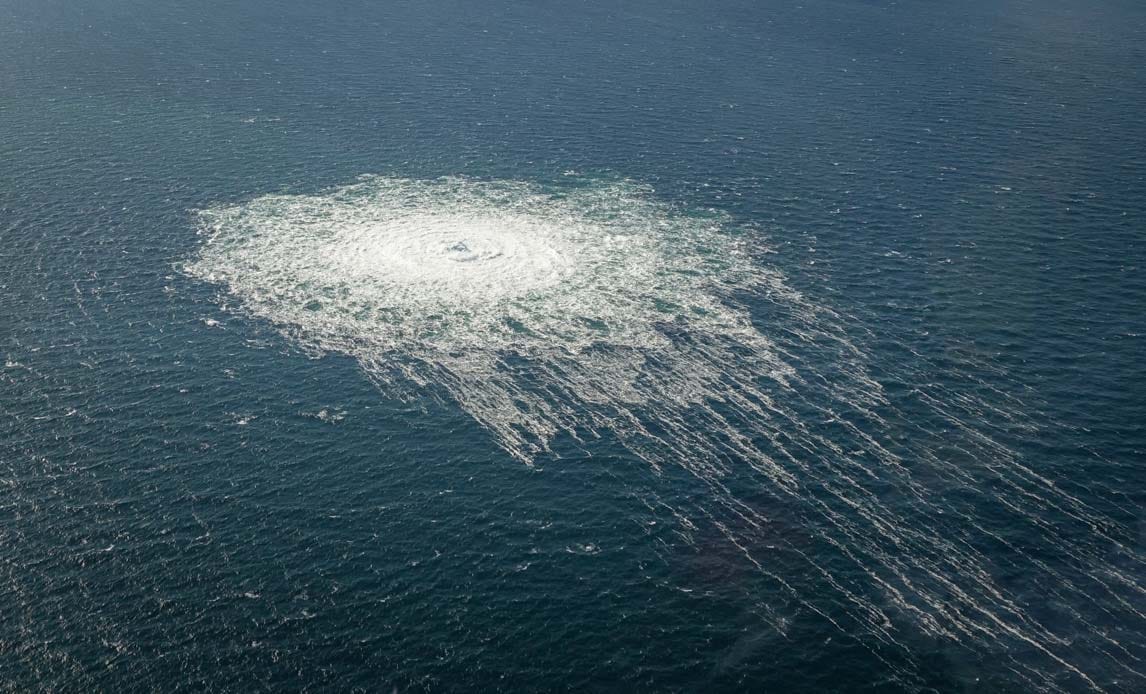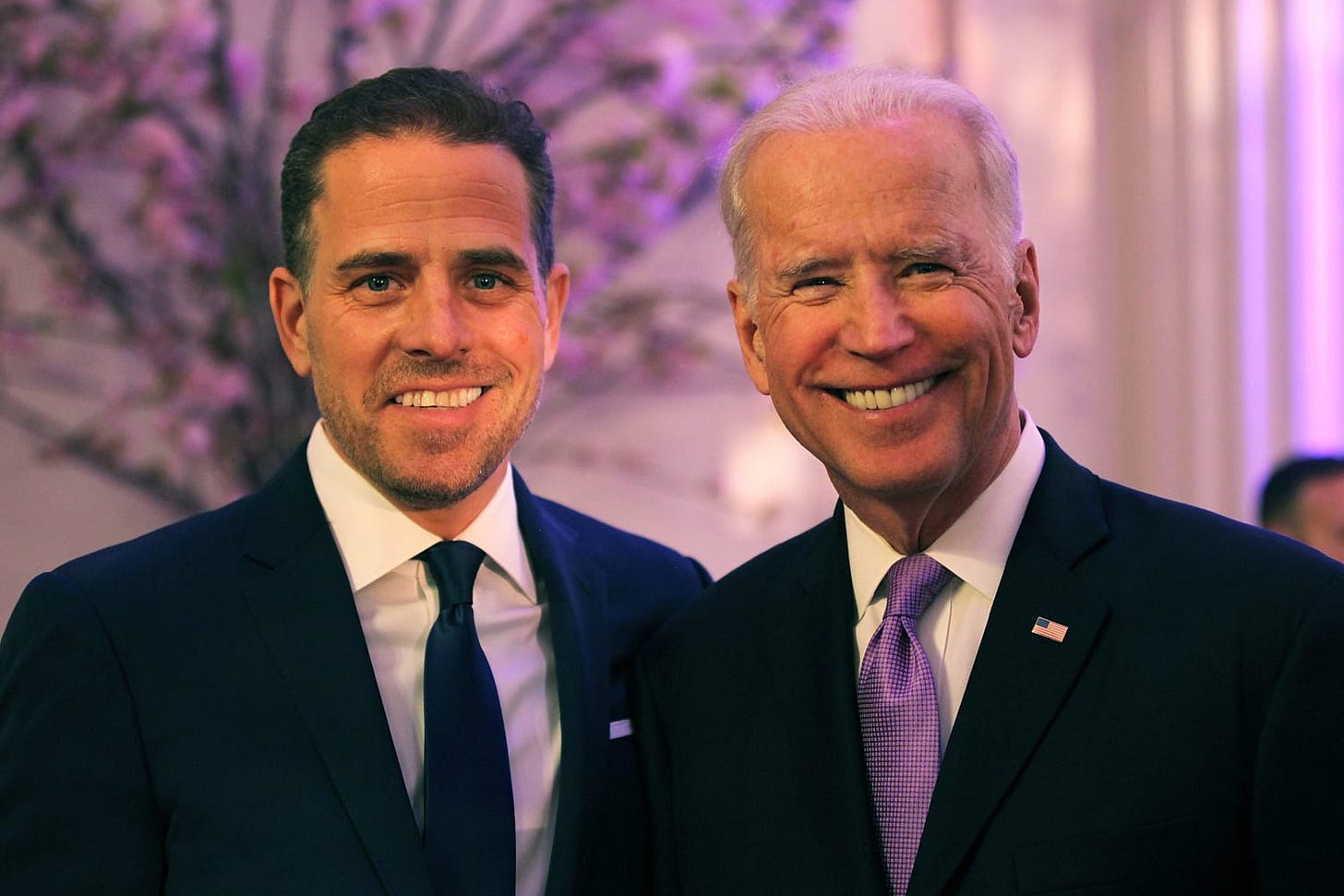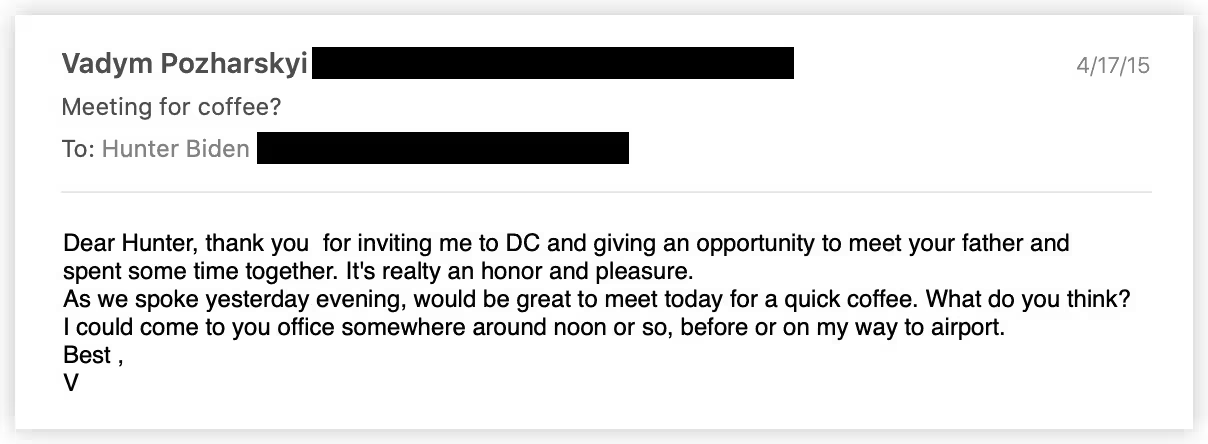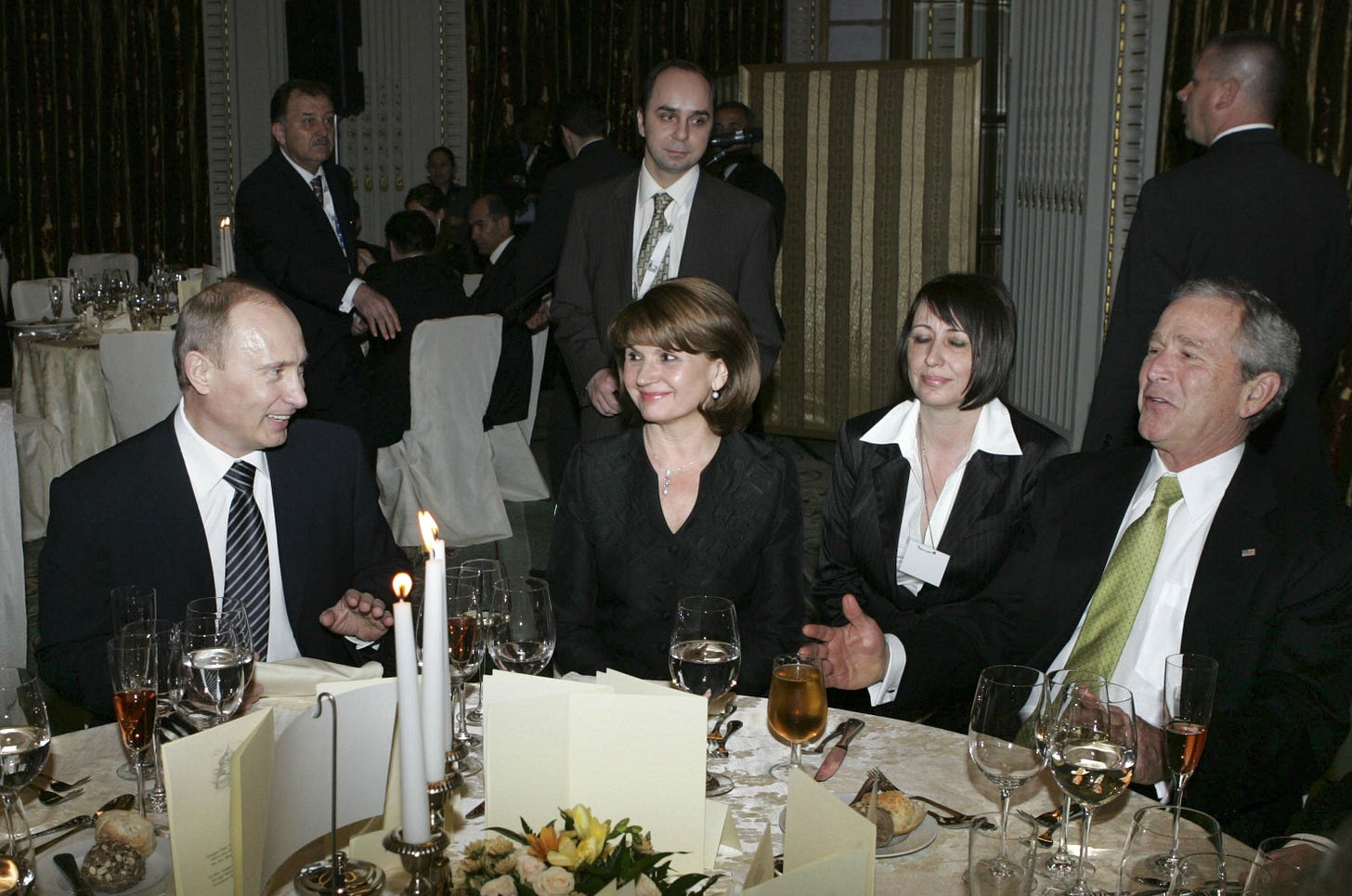The Russo-Ukrainian Proxy War
Broken assurances, Regime Change Playbooks, and Covert Undersea Sabotage
Bottom Line Up Front (BLUF)
The Russo-Ukrainian conflict (2014–present) is rooted in decades of U.S.-Russian geopolitical competition, NATO expansion, and contested regime changes. Russia perceives NATO’s post-Cold War enlargement as a strategic betrayal, while the U.S. views Ukraine as critical to containing Russian revanchism. The 2014 Maidan uprising, U.S. influence operations, and energy politics exacerbated tensions, culminating in Russia’s 2022 invasion. Key drivers include; NATO expansion, soft-power foreign meddling and CIA involvement in maidan revolution, historical context of Ukrainian Nazi’s and corruption, energy politics, Nord Stream sabotage.
Broken Promises (1990s–2008): Verbal assurances against eastward expansion contradicted by 14 new members.
Regime Change (2014): U.S.-backed protests toppled Yanukovych, triggering Russian annexation of Crimea and Donbas.
Energy & Corruption: U.S. energy interests (e.g., shale gas, LNG) intertwined with Ukrainian oligarchs and Biden family dealings.
Proxy War Dynamics: NATO-Russia brinkmanship, covert operations (CIA training), and ultimately US sabotage of the Nord Stream Pipeline [Probable: 75% ±12%].
I. ENERGY & NORD STREAM SABOTAGE
Ukraine holds Europe’s second-largest natural gas reserves (after Norway), with major shale gas potential in the Carpathian and Donbas basins. Pre-2014, Chevron and ExxonMobil pursued Ukrainian shale gas projects, but Russian interference and instability halted progress. Burisma, owned by oligarch Mykola Zlochevsky, was a key energy player. Joe Biden, as Obama’s Ukraine point man (6 visits, 2009–2016), pushed for energy reforms to reduce reliance on Russian gas, aligning with U.S. interests against Gazprom’s monopoly.
Nord Stream Sabotage (Sept 26, 2022): Four underwater explosions destroyed Nord Stream 1 and 2 pipelines in the Baltic Sea—a sophisticated sabotage operation involving deep-sea explosives expertise, motive and strategic access.
Swedish Security Service (Nov 2022): Confirmed “gross sabotage,” found high-grade explosives, but refused to assign blame, citing national security. Closed probe in Feb 2024.
Danish Intelligence & Security Service (Oct 2022): Also confirmed sabotage (4 explosions); Feb 2024 report avoided attribution due to “complex international considerations.”
Germany: Issued warrant for Ukrainian diving instructor (Volodymyr Z.), implicating a 6-person team (5 men, 1 woman) using a Ukrainian-owned yacht (Andromeda) and forged passports.
Unsurprising these conclusions are diplomatically and geopolitically constrained. While indirect media and official narratives frame the Nord Stream sabotage as a geopolitical enigma - while tacitly implying Russian culpability - masks deeper contradictions. First, it is irrational for Moscow to destroy its own $20 billion infrastructure—especially since Gazprom retained a 51% stake. If they wanted to exert pressure this way, they could turn off the flow (Nord Stream 1 was already offline at the time). Moreover, Russia publicly denounced the attack and called for a UN Security Council investigation, further casting doubt on the notion of self-sabotage.
Ukraine, though it viewed Nord Stream as a valid military target, lacked the technical expertise for such a sophisticated underwater operation. In contrast, the U.S. has elite capabilities through Navy SEALs and DEVGRU, along with operational access via NATO exercises in the Baltic. Strategically, Washington had long opposed Nord Stream 2, which threatened to bypass Ukraine and tighten Germany’s energy dependence on Russia. With Nord Stream 1 delivering 35% of Europe’s gas, its destruction forced Europe to diversify—benefiting U.S. LNG exports, which surged by 67% following the blasts. Against this backdrop, Ukraine’s untapped 1.1 trillion cubic meters of shale gas remains a key asset—one Western firms like Chevron and ExxonMobil had pursued pre-2014, in alignment with broader U.S. efforts to erode Gazprom’s dominance. Lastly, numerous American officials have directly admitted the political will and intent to stop Nord Stream.
Victoria Nuland (Jan 27, 2022): “If Russia invades… there will no longer be a Nord Stream 2. We will bring an end to it.”
Biden (Feb 2022):
Biden “If Russia invades, then there will be no Nord Stream 2.”
Reporter: “How will you do that, exactly, since the project is in Germany’s control?”
Biden: “I promise you, we will be able to do that.”
II. NATO EXPANSION: STRATEGIC BETRAYAL & RUSSIAN PARANOIA
1990–1991: declassified U.S./Soviet memos and diplomatic minutes confirm that NATO (Baker, Genscher, Kohl, Mitterrand) provided non-expansion assurances to Gorbachev – “not one inch eastward” –in exchange for German reunification. Gorbachev did not demand written treaties, a critical miscalculation.
1999–2023: NATO admitted 14 Eastern European states, including Hungary (1999), Poland (Ibid), and Czech (Ibid), Bulgaria (2004), Montenegro (2017), Czech. The 2008 Bucharest Summit vague Declaration that Ukraine and Georgia would NATO aspirations crossed Russia’s redlines (forward deployments drawing parallels to the Cuban Missile Crises). A compromise between U.S. hawks and Euro skeptics, which satisfied no one: it alarmed Moscow without giving Kyiv or Tbilisi concrete security guarantees, contributing to Russia’s 2008 war with Georgia and later actions in Ukraine.
Russian Perception: NATO missile defenses (Aegis Ashore) in Poland/Romania threaten nuclear second-strike capability. Crimea annexation (2014) secured Sevastopol (Russia’s only warm-water naval base), countering NATO naval encroachment. Maidan coup, viewed as strategic encirclement would entail loss of Black Sea access. A key Russian concern was NATO’s deployment of missile defense systems in Poland and Romania. Officially aimed at Iran, these systems could theoretically neutralize Russia’s nuclear second-strike capability, undermining mutually assured destruction (MAD). This fueled Moscow’s perception of NATO expansion as an existential threat.
III. MAIDAN 2014: U.S.-BACKED REGIME CHANGE
The Maidan’s turning point was February 18–20, 2014, when sniper fire killed dozens of anti-government protesters – altogether, 108 civilian protesters and 13 police officers were killed - paving the way for the February 22 parliamentary vote to remove Yanukovych.
Roots: protests triggered by Yanukovych’s suspension of an EU Association Agreement igniting underlying tensions included Ukraine’s economic stagnation, rampant corruption, and a cultural divide between pro-West Ukraine and pro-Russian eastern regions.
Nuland-Pyatt Leak (Feb 2014): U.S. orchestration of post-Yanukovych leadership (“Yats is the guy”) prior to ousting and “"Fuck the EU" bypassing EU consensus.
Funding: $5B in U.S. “civil society” aid (1991–2013) via NED, Freedom House, USAID, and Soros’ Open Society Foundation trained activists (e.g., Opora, Chesno), monitored elections, and amplified anti-Yanukovych narratives.
Post-Coup Fallout: Crimea’s loss (strategic naval base), Kyiv launched “Anti-Terrorist Operations” against Russian-speaking Donbas separatists, and failed Minsk I (2014) and II (2015) accords failed under mutual distrust -Ukraine resisted granting Donbas special status, fearing it would legitimize Russian influence; Russia-backed separatists violated ceasefires. Post-Maidan, Ukraine’s forced de-Sovietization—removing Russian statues, banning Russian language in official contexts, and rewriting historical narratives—alienated Russian-speaking regions, fueling separatist sentiment and providing Putin with propaganda leverage.
IV. HISTORICAL NATIONALISM & FAR-RIGHT LEGACIES
Stepan Bandera: WWII-era OUN/UPA leader collaborated with Nazis against Soviet Union, glorified in western Ukraine (40 monuments by 2022 according to Götz Aly). Viewed Nazis as a means to achieve Ukrainian independence. UPA massacred Polish civilians (e.g., Volhynia, 1943–44, killing tens of thousands) and jewish people, often alongside German forces.
Azov Battalion: Neo-Nazi militia (utilising Wolfsangel insignia) Founded by Andriy Biletsky - tied to National Socialist Assembly (SNA). Early members included ultranationalists, football hooligans, and neo-Nazis, some openly displaying Nazi symbols (e.g., Das Reich emblem, Black Sun, etc). U.S. officials courted Ukrainian oligarchs like Kolomoisky and Pinchuk, who funded militias (e.g., Azov, Dnipro-1) and political campaigns. Additionally US offered training and weapons (Javelins, 2018) and integrated into National Guard (2014). Azov’s estimated 900–2,500 fighters. Groups like Right Sector, Dnipro-1, and Aidar also emerged post-2014 funded by oligarchs like Igor Kolomoisky and Serhiy Taruta.
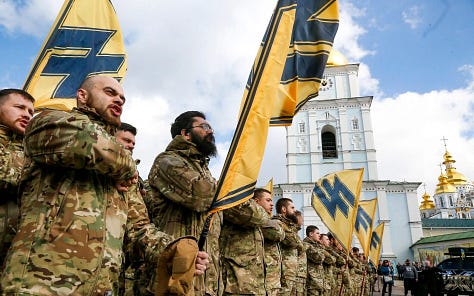
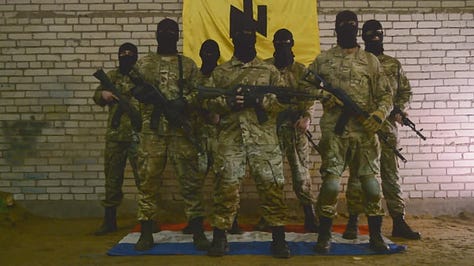



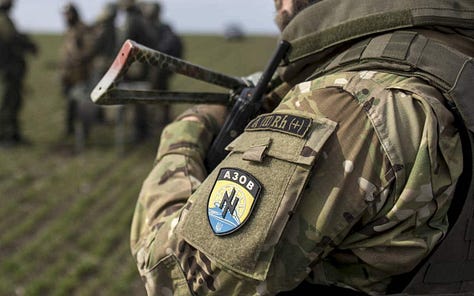
V. HYBRID WARFARE
Both “Orange Revolution” and Maidan followed the “soft coup” color revolution template—media narrative war, NGO-driven protest logistics (OSF funding activists and media groups), and heavy foreign funding (e.g., Bolotnaya in 2011–12). EU officials (e.g., Catherine Ashton) visibly present during Maidan, signaling Western backing. Kremlin interpreted these as regime-change dress rehearsals, similar to Maidan given US has a proven track record of U.S. regime-change via influence ops in the post-Soviet (Georgia rose revolution, Kyrgyzstan, etc) and around the world. The U.S. provided $5 billion in aid since 1991, with $1 billion in loan guarantees tied to reforms post-2014.
Post-2014 Training: CIA rebuilt SBU (Ukrainian intel), established fusiopn centers providing real-time targeting data (e.g., Donetsk Zoopark strike, 2022). The CIA/MI6 effecitvely rebuilt the Ukrainian intelligence service under Valentyn Nalyvaichenko
Project AERODYNAMIC: Pre-1991 CIA ops supported anti-Soviet Ukrainian groups (OUN), mirroring Cold War stay-behind networks (Operation Gladio).
Regime Change: The U.S. honed its regime-change template over decades, deploying NGOs, media campaigns, and youth movements to orchestrate “color revolutions” in Serbia (2000), Georgia (2003), and Ukraine (2004, 2014). Maidan epitomized this playbook: U.S.-funded groups like Opora trained activists; Radio Free Europe amplified anti-Yanukovych narratives; and Ukrainian oligarchs (Kolomoisky, Pinchuk, Taruta) bankrolled pro-Western militias and politicians.
The U.S. further entrenched its influence through economic integration, channeling over 3 billion in USAID assistance since 1992 5 billion in post-2022 development aid) to align Ukraine with Western markets, energy and security interest.

VI. SYSTEMIC CORRUPTION
Post-1991, oligarchs and criminal networks captured state institutions, with figures like Pavlo Lazarenko accused of embezzling millions. Corruption permeates police, politics, and industry, ranking Ukraine 104th out of 180 in Transparency International's 2023 index. Gallup reported in 2019 that "Just 9% of Ukrainian residents have confidence in the national government, the lowest confidence level in the world for the second straight year.
Transparency Internationall Ranking: Ukraine ranked 122/180 (2021), with defense graft (e.g., $1.2B embezzled in 2022).
U.S. Complicity: Kolomoisky-funded militias (Azov) received tacit support despite extremist ties.
Hunter Biden Burisma: Joined Burisma (2014) amid VP Biden’s oversight of Ukraine policy earning $50,000/month despite no prior expertise. Hunter’s laptop Email show Burisma executives leveraging access to U.S. officials. Biden threatening to withhold $1B aid unless Ukraine fired Viktor Shokin, who investigated Burisma. Coincided with U.S. energy firms (Chevron) seeking shale gas deals.
Oligarch Networks: Hunter has direct deals with Kazakh oligarch Kenes Rakishev (KazMunayGas); Russian oligarch Yelena Baturina—Russia’s wealthiest woman and wife of the former mayor of Moscow—who wired $3.5 million to a Rosemont Seneca Thornton account where Hunter Biden was a beneficiary; and Ukrainian oligarch Mykola Zlochevsky, associated with former President Viktor Yanukovych. Not to mention figures like Ihor Kolomoisky (Azov financier), Victor Pinchuk (who donated $10–25 million to the Clinton Foundation), and again Zlochevsky (Burisma), all of whom are entrenched in corruption despite U.S. rhetoric. The Clinton Foundation received substantial donations from Ukrainian oligarchs, notably Victor Pinchuk, a steel magnate who hosted Clinton at his Yalta European Strategy conferences, where she advocated for Ukraine’s Western integration.
ANALYSIS OF STRATEGIC MISCALCULATIONS
U.S./NATO: Overestimated Ukraine’s NATO viability and underestimated Russian resolve. Post-Maidan military aid ($113B, 2022–2024) - lifting restrictions on U.S. weapons strikes in Russia (e.g., near Kharkiv, 2024) and authorized CIA-backed drone strikes on Crimea (2022) - escalated proxy war. From the U.S. perspective, NATO expansion was justified to secure post-Soviet Europe, prevent Russian revanchism, and integrate former Warsaw Pact states into the Western economic and security orbit.
Russia: Misjudged Ukrainian resistance/Western unity; sanctions crippled economy ($3.6T GDP loss, 2022–2024). Ignored Russia’s historical paranoia about Western encirclement, rooted in centuries of invasions (Napoleon, Hitler) and the loss of its Soviet buffer zone.
EU: Energy dependence on Russia (35% gas via NS1) forced costly LNG pivot post-2022.
Conclusion
At its core, the conflict revolves around control of critical resources—energy transit routes, shale gas reserves, and strategic Black Sea access—while serving as a fulcrum for U.S. efforts to weaken Russia and expand NATO’s influence. The Ukraine war is fundamentally a proxy conflict, with Ukraine instrumentalized as a strategic buffer state and a pawn for great-power competition.
End of Brief.
[For more information on Section 14 please click here.]




